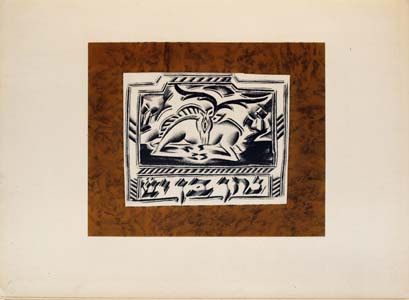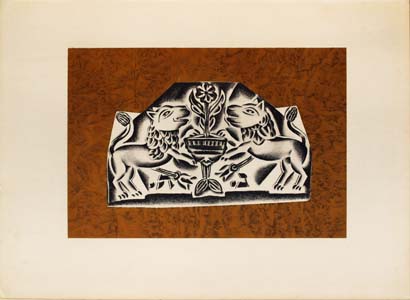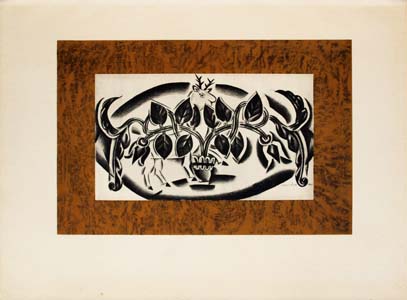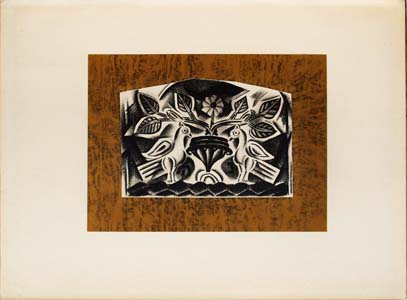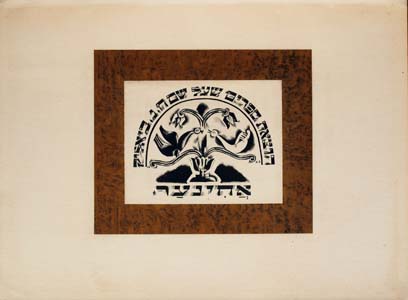|
Natan Altman (1889 - 1970) |
1448 |
|||
|
|
Max Osborn Еврейская графика Натана Альтмана Nathan Altman's Jewish graphics Berlin: Petropolis, 1923 488 x 364 mm. 21 pages Edition: 250. Copy no. 216
|
Copy with a dedication by Altman dated 1939 Osborn describes the origin of this book in his introduction. In 1913, the 24-year-old Altman was visiting the old Jewish town of Gritsev in Volhynia, in the south of Russia. He was fascinated by the ancient tombstones of the Jewish cemetery. Altman did not copy the old and withered stones but used elements of the familiar motifs, typical of the small towns in Eastern Europe, to create his own interpretation of Jewish art. Jewish tombstones are mostly perpendicular stone slabs. The top is arched, rectangular or triangular and filled with an ornate relief. Religious injunction forbids the representation of a human figure, so more often plant motifs, animals and objects connected with the deceased person’s profession appear in the decoration. The book contains ten designs that are printed on a golden background. The ten designs are all in black-and-white and show different motifs. Some motifs from tombstones, others from literature. In the above design, two lions are flanking the tree of life. One can assume that the deceased was called Lev (or Leib), meaning lion, or that he belonged to the tribe of Judah. Altman takes this familiar motif including the P and N for here lies (see nr. 49) but redesigns the image in a linear way that shows a clear constructivist connotation. Copy with autograph: Na pamiat V. V. Strekanovu. Nat.Altman, 1939, Leningrad [In remembrance to V.V. Strekanov. Nat. Altman, Leningrad 1939]. References: Heidelberg 1974, pp. 273-275 M. Krajewska, Time of Stones. Warsaw 1983, pp.3-7. Etkind 1984, p.27 Kampf 1987, p.27 Jerusalem 1987, pp.160-162 Berlin 1989, pp. 149-150 Cotsen 2003, nr. 262 Düsseldorf 2018, no. 25 |
||

